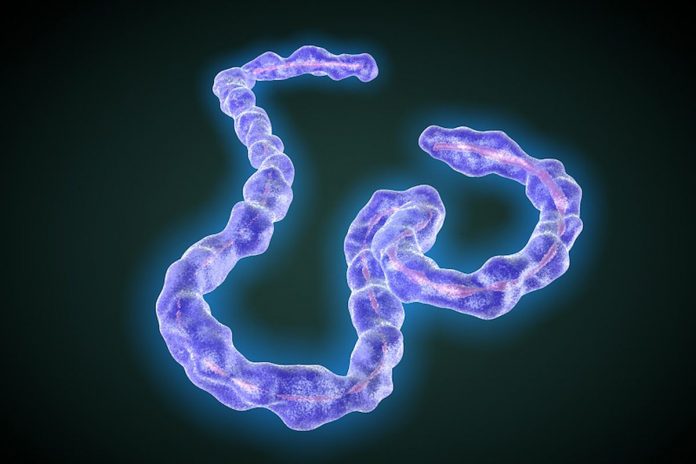Infectious disease researchers have discovered a new method for effectively protecting against and treating Ebola infections. The study, performed in mice, used an adeno-associated virus (AAV) to deliver monoclonal antibody genes against Ebola. Similar viral vector treatments have been used to effectively treat human immunodeficiency virus (HIV) infections. The study findings were published in The Journal of Infectious Diseases.
“Our goal is to make an antibody-based therapy that can protect against all strains of Ebola, and potentially Marburg virus, as well,” says Prof. Sarah Wootton, Department of Pathobiology, who, along with PhD student Laura van Lieshout, found a new way to fight Ebola. “It would be used to stop the spread of the virus in outbreak situations.”
Traditional monoclonal antibody (mAb) treatments for Ebola are promising but are limited by the resources required for production and the immunity they provide is short-term. Using a viral vector method, anti-Ebola monoclonal antibody genes are delivered to the cell and the cell will produce the antibody and secrete it into the bloodstream to fight an infection. The research team demonstrated that in mice, 100 percent protection was provided against an Ebola infection with a mixture of two different types of antibodies and 83 percent protection was provided with a different antibody cocktail. The gene therapy was shown to provide protection from the disease for five months following administration.
“We are hoping to use this technology in a post-exposure scenario. Let’s say someone has been exposed to Ebola. The idea would be to give them this AAV vector to start producing the antibodies that prevent death, commented Wooten.”
The preliminary findings are promising and the team is moving forward to develop a gene-based therapeutic or vaccine to Ebola or one that can be used to treat other filovirus infections such as Marbug.















